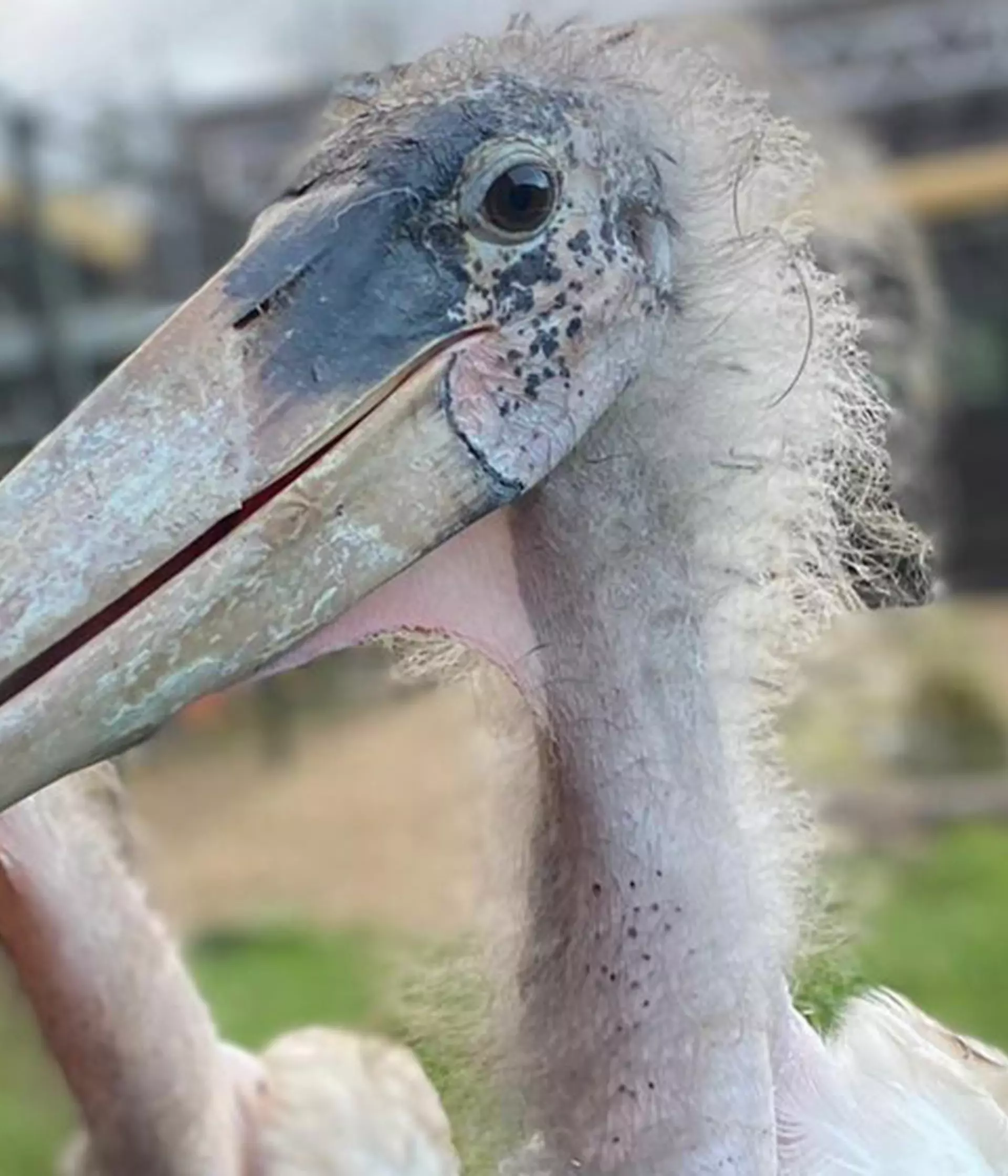The undertaker bird
Unlike most storks – commonly associated with delivering babies and bringing new life – these so named undertakers gained their unfortunate nickname because of their huge, dark, cloak-like wingspan and penchant for rotten carcasses. They are often found near urban developments, especially landfill sites, as they scavenge on waste.
The 5ft tall marabou storks can be identified by their huge 9ft wingspan, bare throat sac and hunch. Like vultures, they have no feathers on their head to enable them to feed on carcasses without becoming covered in blood.
The Marabou stork has one of the largest distributions of any land bird, and it found across across Africa south of the Sahara.
Marabou stork lifespan
Marabou storks can live up to 40 years.
African stork diet
They eat a wide variety of foods including meat from carcasses and food waste, often left by humans, helping to avoid the spreading of pathogens, which is essential to our environment.
Marabou Storks may not have a very pleasant-sounding nickname but they are a vitally important species for their eco-system and need recognition for that. Our storks are helping share the importance of the species and are helping a few more people see past their gloomy demeanour.
